



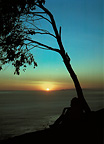
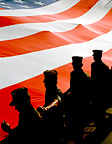






The Friedman Archives Newsletter July, 2008
Yes, that's right, the newsletter is actually on a webpage now instead of taking up space in your mailbox! There's a lot of images to share; and just sending a pointer to this page seems to bypass all the overzealous spam filters. So, welcome to this month's newsletter!
In this issue:
Published in National Geographic!
Finding the Right Light in Alaska
Can you get great shots on a family vacation?
Advanced Topics 2 – The Results
RAW Processing Update – part II
Published in National Geographic
Just like it is the wish of every soccer player to compete for the World Cup, so too is it the dream of every photographer to be published in National Geographic. So imagine my surprise and excitement when they licensed one of my images! In my life, I had worked on some projects which I felt were worthy of publication in their magazine, but with all the talented staff photographers they had available to them, how flattering that they sought me out for one of my stock images!
Of course I had no idea how they were going to use it; at the time I only knew that it would appear in the July/August 2008 edition of National Geographic Adventure magazine (which some would argue is not the same thing as the formal National Geographic magazine, but hey -- I’ll take what I can get!). The image I sold them was this Chinese Stop sign:
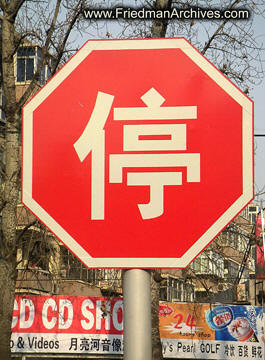
And about two weeks ago the issue went online and I discovered how they used the image:
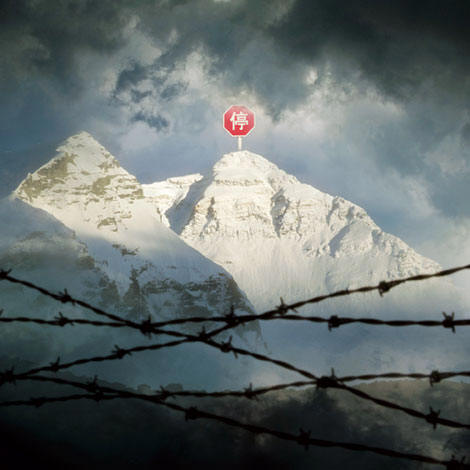
(You can see the image in context at its original location: http://adventure.nationalgeographic.com/2008/06/special-report/everest/ed-douglas-text)
Oh, well... I guess that counts as 0.00015 minutes of fame!
Finding the Right Light in Alaska
I live in Southern California, where it is relatively easy to recognize good outdoor light. Not so in Alaska, where we participated in our family's 2nd-ever reunion. With the skies overcast and the sun perpetually in the sky, it is sometimes hard to see the telltale shadows of where the good light is coming from. Furthermore, the camera has no idea that you’re shooting in difficult light (ain't that always the case!) – if you’re pointing the camera the wrong way, even if the scene looks great to your eye, it WILL give a horrible underexposure which, given the wide range of brightnesses already in outdoor scenes, is very, very difficult to compensate for later on.
I tackled this challenge by not employing any exposure compensation when taking the images – I didn’t want to risk any blown-out highlights at all. Instead I let the camera underexpose (as all camera exposure meters are wont to do with bright subjects) and then brighten them in Photoshop when I returned home.


Perhaps needless to say, I shot in RAW so I had the most latitude in "fixing" the image. (Bringing out detail in the sky, for example).
Taking family pictures with such a bright and beautiful background proved even more challenging. If you’re exposing for the snow-capped peaks correctly, for example, then the light on your subject is insufficient. Using a flash usually can fix this problem by providing some local light for the subject, but when you do this in Program mode the camera tends to underexpose the background by about a stop, resulting in unnatural-looking images that don’t look at all like how you remember seeing it.

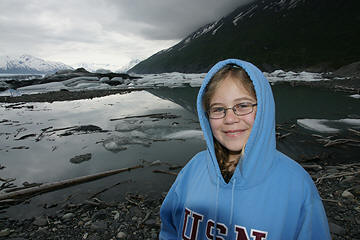
(Notice I used the pop-up flash and didn't remove my lens shade, as there's a small shadow on the bottom of the right image.)
There are many ways to solve this problem. One way is to spot meter for the background and invoke AEL (Exposure Lock). This will tell the camera not to try to underexpose anything -- use the AEL reading instead. Then set the Flash compensation to -1.5 or -1.7 so that it's not readily apparent that you used a flash.
In the examples below, the first image shows the result when you spot meter for the top center (the mountain range) and then hit AEL to hold that exposure. The 2nd picture is the identical exposure, with the flash turned on and on Auto. Notice how it really, really looks like a fill-flash was used! Setting the flash compensation to -1.7 (3rd picture) makes everything look balanced and natural.
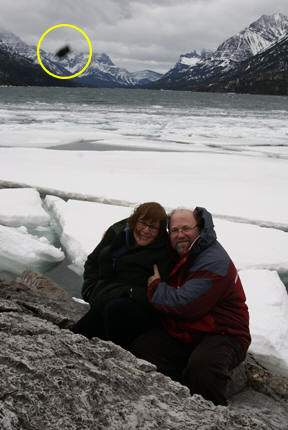
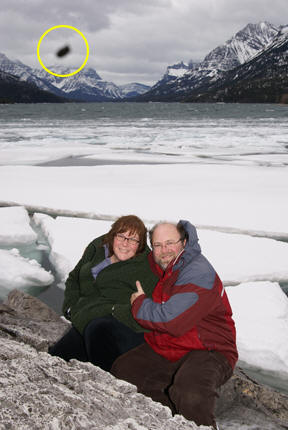
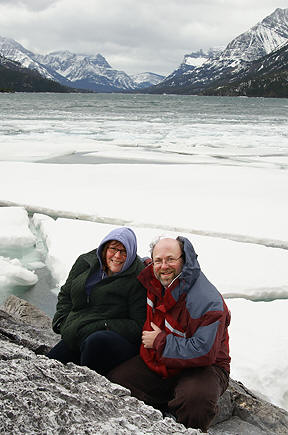
Now look at the big black spots in the yellow circles of the first two pictures. That is a giant piece of dust on the sensor! I can't think of a better way to communicate the idea of "ALWAYS clean your sensor before a major shooting (especially if it involves being outdoors!)".
Can you get great shots on a family vacation?
Toward the end of our trip, my wife Carol bought me a gift – A National Geographic magazine containing compilations of photos (in this case of Alaska) that they have published over the years. Thumbing through volumes like these can be very inspirational. It can also be very frustrating, because the photographers who took these shots no doubt spent days or weeks at a particular location, waiting for just the right light, and then took thousands of images to ensure that one perfect shot could be submitted to a photo editor.
Fortunately, my wife is very understanding of this kind of behavior, and supports me whenever I have a sudden urge to delay our plans, or even change our itinerary just so I can get a shot that I have in mind. Two such shots from our last trip are shown below. This is obviously not the kind of dedication that the above-mentioned photographers go to, but a little forethought and a little flexibility can really go a long way toward a "Wow!" shot. (And yes, I love the color of the sky at twilight):
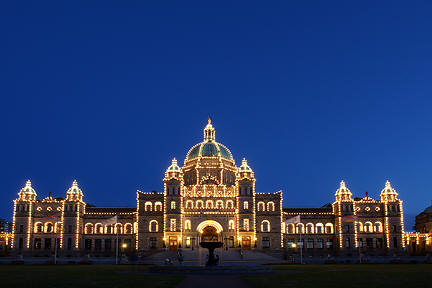
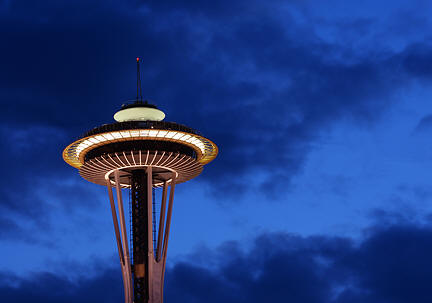
There are many budding photographers who would very much like to put in the extra time it takes to get such extraordinary shots, however the constraints of work and the common family vacation actually prevent them from achieving their full potential and getting those trophy shots.
If you found yourself nodding your head in agreement with the previous sentence, then you should definitely know about the Friedman Archives Photo Expeditions. You can think of them as the opposite of a family vacation – you are there for the sole purpose of shooting trophy images, and we take you to the places that are most likely to yield them. You can roam around, interact with locals, and take your time to get just the right shot you envision. We’ll be getting up early on some days just to catch the sunrise. And you’ll be traveling with other friendly, like-minded photographers, who can often stimulate the creative process, answer technical questions, and help make the journey more enjoyable. Evening lectures reminding you of the light and compositional techniques that can lead you to “Wow!” type shots, plus opportunities to see each others’ work can help you creatively as you see how others tackled the same subject.
The next expedition will be taking place in Latvia (which starts on July 13), and then an unforgettable tour of the vanishing rural China will happen on March 16-25, 2009. These are expeditions that you will remember well into your 80’s (long after the thoughts of cost have faded away), and you can learn more about the program at www.FriedmanArchives.com/expeditions and click on the "Eastern China" link. Sign up now, keeping in mind that employers love it when you give them advance notice of your absence!
Advanced Topics 2 – The Results
Last month I solicited input from readers about what I should include in the new Advanced Topics 2 e-booklet I hope to have finished later this year. And boy, did I get a deluge of email! Based on the feedback, I have updated the Table of Contents to include the following topics:
But NONE of the votes for these topics can hold a candle to the sheer volume of email I received asking for more information on RAW processing. This topic received about 5 orders of magnitude more votes than any other single topic. It seems the best way to draw on RAW’s advantages is both mysterious and elusive.
Making things worse, just about everyone who wrote in on this topic asked, “Can you talk about RAW processing using [insert specific 3rd party RAW processing software here]”, with the brackets containing one of the following:
Now I certainly agree that RAW can be intimidating to a beginner, and I think I have a pretty good track record of explaining things in a step-by-step manner, but… how on earth can I possibly write a clear and intuitive guide when all of these packages have completely different user interfaces (even though they pretty much all do the same things)?? Worse yet, how can I possibly find the time to become expert enough in each package in order to explain it thoroughly?? I want to step up to the plate but am not sure how. A conundrum!
One approach that I don’t very much like is to only talk in generalities, arm-waving about all the different types of post-processing functions, and which ones are best done in RAW conversion stage, and which ones are best done in the conventional image-tweaking software. And then I will constantly iterate the greatest of all cop-out lines used by lazy manual writers: “Refer to your software’s manual for instructions on how to do this”. I really hate that approach; it is frustrating to the beginner, and it could be oh-so-much clearer if the author could only go the extra mile and show how to do it with [insert 3rd party package name here].
There is another approach, which I think might work much better: This mailing list (and online forums, which I hope to also tap into) are filled with people who are already very familiar with each of the software packages mentioned above. Perhaps I could write a “boilerplate” tutorial on the ins and outs of RAW processing (using my own style of writing and teaching which so many have said is clear, intuitive, and somewhat unique in the educational world), and then hand it to a cadre of hand-picked experts and have them customize it for a particular software platform. In short I will be co-authoring about a half-dozen different e-booklets catering to each niche package.
I’ve never worked this way before, and there are many details to consider: What is the best way to keep these e-booklets up to date with each new software release? What is fair compensation for the co-authors (that doesn’t make the back-end accounting a pain)? Should these authors also be expected to accommodate the inevitable flood of tech support emails that I normally receive for my ebooks?
Your thoughts on this approach (or perhaps a better one) are valuable and welcome. Because of this topics’ popularity I will start this project first as its own e-booklet, probably around August when my travel schedule slows down.
RAW Processing Update – Part II
Since publishing the May newsletter (where I tried out Capture One’s superior dark noise suppression RAW conversion on an older Konica Minolta A2 image), I received a very enthusiastic series of emails from Conrad Ware, who took my sample RAW image and ran it through his copy of Noise Ninja, with which he was very familiar and sent me the results for comparison. He also sent me a plethora of Noise Ninja noise profile files which characterize the A2's noise structure. Both the new comparison image and the noise profiles can be found at the bottom of the original article here.
Boston
The next Friedman Archives High-Impact Photography weekend seminar will occur in Boston on October - please see http://friedmanarchives.com/seminars/boston . I might be able to set up a Northern California seminar soon after that if there's enough interest - go ahead and fire off an email to seminarinterest@friedmanarchives.com and make your voice heard!
In 2009 the possible list of seminars we're exploring are Amsterdam, Copenhagen, Australia, New Zealand, and possibly New York. Again, fire off an email to seminarinterest@friedmanarchives.com to express your interest and be notified of developments!
Next Month
Last month I promised a review of Gary Fong's LightSphere II Flash diffuser, which I am going to postpone until next month because I've been having problems getting properly-exposed flash pictures while using it. About 30% of the images I take with it turn out underexposed, and I think I know the reason why -- even when a lens hood is attached, the unit spreads light so much (and the diffuser sticks out so far in front of the camera) that some of the light might actually enter the front of the lens during the pre-flash phase. I need to experiment with it some more to understand its strengths and weaknesses, plus even more testing is needed to determine if it's really any better than the piece-of-paper-taped-to-your-accessory-flash that I use all the time to good effect (which is free). And the Latvia Photo Expedition (which embarks in less than two weeks!) should provide plenty of opportunity to do more testing. I'll let you know how things go!
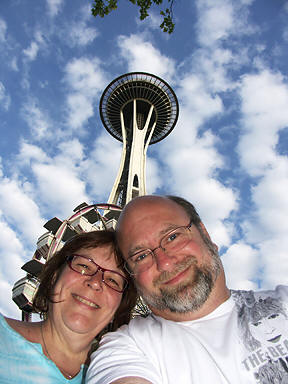
Yours Truly,
Gary Friedman
Next Newsletter - August 2008 Previous Newsletter - June 2008
Back to the Friedman Archives Home page